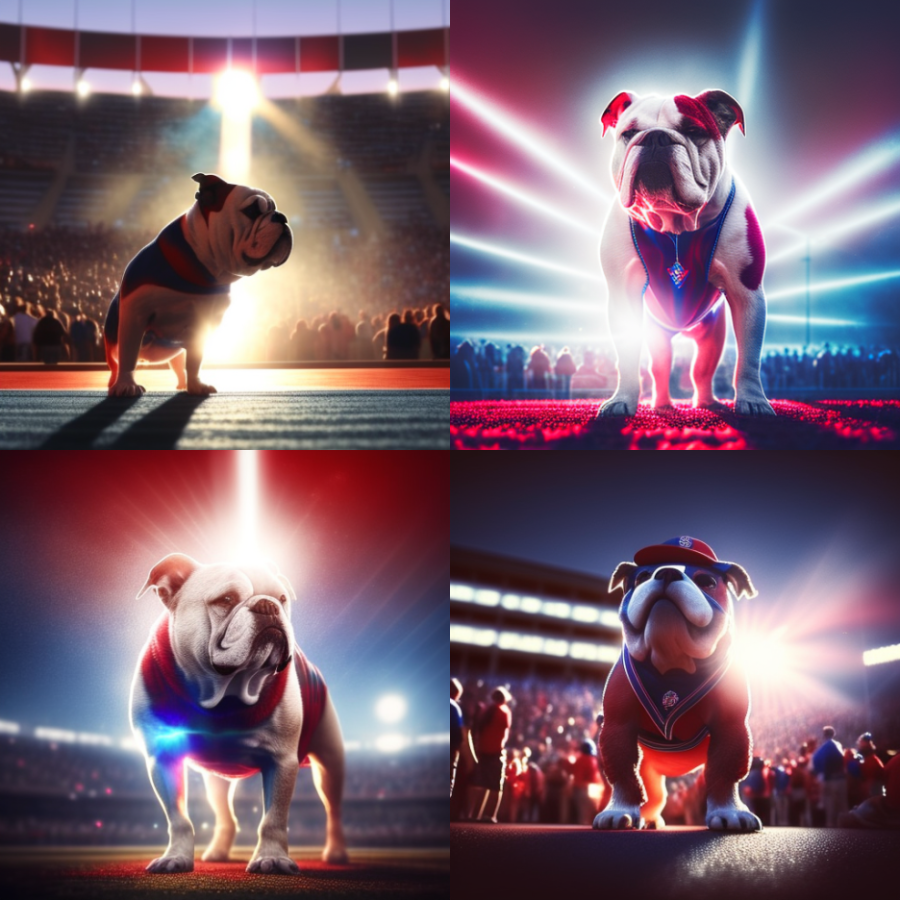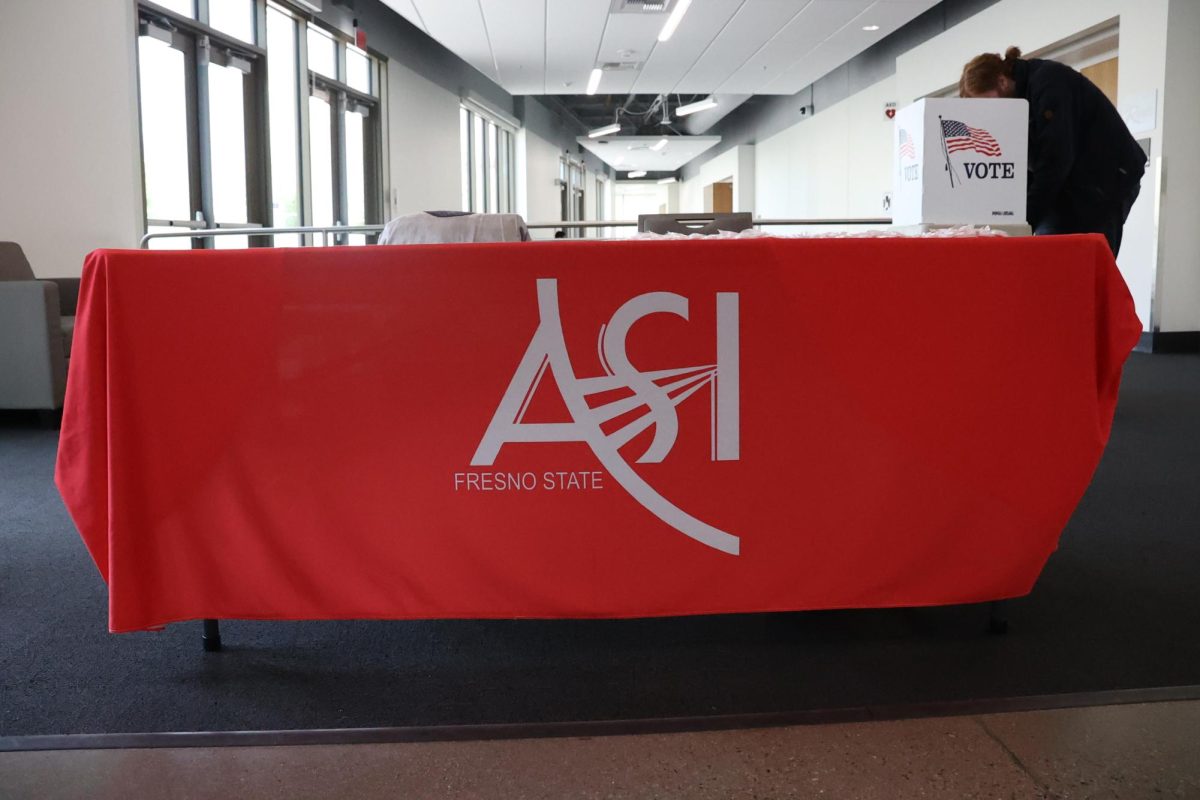AI art does more harm than good
A series of images of Victor E. Bulldog generated through specific prompts by Fresno State professor Wesley Wise. (Courtesy of Midjourney)
Feb 28, 2023
Imagine yourself as a superhero in the Marvel universe. Or better yet, imagine yourself as royalty of some fictional kingdom. All it takes is a personal photo inserted into LensaAI, and your exact likeness is copied into multiple fictional scenarios.
Upon seeing the trend, I was in disbelief.
AI art is being used as a convenience, rather than a serious take on creativity, in order to save money that should go to human artists.
In November 2022, social media platforms Twitter and Instagram were flooded with an abundance of AI generated art after users posted themselves in different fictional scenarios. Of the most popular, LensaAI and DALL•E 2 were all the rage.
AI artwork programs such as Midjourney, DALL•E 2 and Stable Diffusion create user-generated images based on specific prompts. LensaAI takes users photos and creates stylized artwork with the users exact likenesses. This trend is growing beyond art as well.
In a similar manner, without the use of image creation, ChatGPT has the capability of creating long-form text.
The software programs learns from users and forms images or text based on structures and patterns from what it has gathered through its user base. However, when it comes to images, it takes from artwork published by human artists online.
Is it ethical to use AI? As a person with my own creative endeavors and association with human artists, I say no.
While it may seem practical to create an image with AI, why not get a human artist to do it?
Wesley Wise, a professor in the Media, Communications and Journalism Department at Fresno State, said the software programs should be used for “brainstorming” purposes only.
Wise allows and encourages his advertising students to utilize the programs as an additional tool for cultivating ideas.
“I want to use it in my classroom to allow people to use their imaginations, without [needing] technical expertise in manipulating graphic design tools to create images. Then, they can work well with the text that they’ve created to make a holistic ad the way they want it to,” he said.
Wise said that the use of AI programs in a university setting should mainly be as a creative tool, not a substitute for graphic design entirely.
“It’s a powerful tool that can really unlock a lot of creativity and productivity. And we want to see it used the best, most cautious way possible,” he added.
Wise added that while the programs are new, having users play with it lets the public recognize the negatives of the technology. That comes with the addition of potential misinformation.
“You have to ostensibly put it out there at least in a controlled setting and let people play around with it. So you can see where the bugs are,” he said.
Virginia Patterson, a professor in the art department, also takes the stance of creative brainstorming made easy.
“I do introduce students to AI language tools to help them ideate brand names or copy for their projects. As designers we aren’t necessarily skilled copywriters, but we do have to work with language. In the profession, you might collaborate with a copywriter. In the classroom, AI fills that gap,” Patterson said.
She added that the use of AI tools can help individuals or teams conceptualize works before the final execution.
Patterson told The Collegian that art is quite complex in the sense that anyone can really make their own decisions on what can be considered art.
“AI image generators do require some vision and highly specific text to generate the thing you’re after,” Patterson said. “I personally am not one to be a gatekeeper of any discipline or judge what qualifies as art or not.”
However, she believes that AI can form a bias and furthermore construct misinformation with those who do not have an understanding of the technology.
“I just think chatbots present another level of concern for a user who is seeking answers or advice from a chatbot. Additionally, AI has biases. Another social fear is that it will continue to perpetuate racist, sexist, classist, etc. stereotypes in both language and image,” she said.
While the AI trend seems harmless, fine and digital artists on the social platforms were quick to suggest that the programs were stealing from them to generate images. On Twitter, the hashtag #SupportHumanArtists was created in opposition to the trend.
Artists banded together and incorporated metadata and invisible watermarks to identify their artworks and to stop the AI program from generating an image. ArtShield, a software program created to place invisible watermarks on artwork to halt AI training, aims to combat mass art theft.
In an interview with Forbes, David Holz, creator of Midjourney, explained the goal of his AI company.
“The goal is to make humans more imaginative; not make imaginative machines,” Holz told Forbes.
While he suggests that it helps users with creativity, the images steal from a public database to generate images.
“There isn’t really a way to get a hundred million images and know where they’re coming from. It would be cool if images had metadata embedded in them about the copyright owner or something. But that’s not a thing; there’s not a registry,” Holz said in the interview.
To translate: Yes, AI will take artwork if prompted to do so. Digital artwork posted to the web is subject to theft for the sake of teaching AI.
But another question is brought to mind when it concerns AI software: what happens to the human artists?
The narrative is it’s easier to replace freelance artists. People such as Nick Gray, an entrepreneur, on Twitter said AI programs like Midjourney are easier because of the speed, also praising the quality of the work.
It ignores the talents (and years of experience) of freelance artists for cost efficiency, as the human unknowingly gets replaced by AI. I guess, human artists don’t have to eat, right?
In an interview with VICE, Zhang Wei, an artist affected by the phenomenon, was suddenly told his services were not needed after the company he worked for found AI to be a cheaper alternative.
While the AI tools help with creative brainstorming for others, it erodes the process for fine artists.
“What actually took your job isn’t AI, but the operator who uses the tool to increase their productivity and create artwork more effectively,” said Xi Qiao, a digital artist, in an interview with VICE.
“You no longer need to undergo years of formal training in art to acquire the skills, you only need to write prompts and grasp the rules of these models,” Qiao added.
Technological advances and the relevancy for humans performing jobs is not something particularly new. However, with the addition of these programs the most unique of human talent is questioned.
Perhaps, it is something artists just have to, unfortunately, get used to.








